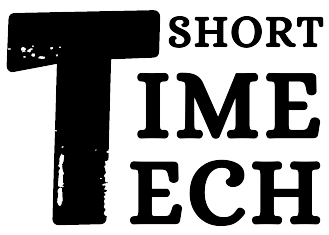Smart wearable technology has undergone rapid evolution in recent years, extending beyond fitness tracking to encompass a wide range of applications from health monitoring to augmented reality. These advancements are not only enhancing personal convenience but also contributing to significant improvements in health and productivity. Here’s an overview of the latest innovations in smart wearable tech, highlighting the breakthroughs, applications, and future directions in this exciting field.
1. Advanced Health Monitoring
One of the most transformative aspects of smart wearable technology is its capability to provide detailed health monitoring. Modern wearables have moved beyond simple step counting to offer comprehensive health insights.
1.1. Continuous Health Monitoring
Recent innovations have enabled continuous and more detailed health monitoring. Devices like the Apple Watch Series 8 and Fitbit Sense 2 offer features such as ECG (electrocardiogram) monitoring, blood oxygen level tracking, and even skin temperature measurements. These functionalities allow users to keep a close watch on their cardiovascular health, respiratory function, and overall well-being.
For instance, the Apple Watch Series 8 incorporates advanced sensors for monitoring heart rate and detecting irregularities that may suggest atrial fibrillation. The Fitbit Sense 2 includes a continuous electrodermal activity sensor, providing insights into stress levels and autonomic nervous system health.
1.2. Wearable Diagnostics
Wearable technology is also making strides in diagnostics. Devices like the KardiaMobile by AliveCor enable users to perform personal ECG tests and receive immediate feedback on their heart health. This type of wearable can detect conditions such as atrial fibrillation and provide critical data that can be shared with healthcare providers.
2. Integration with Augmented Reality (AR)
The integration of augmented reality (AR) with wearable technology is expanding the possibilities for immersive experiences and enhanced functionality.
2.1. AR Glasses
AR glasses represent a significant advancement in wearable technology, merging digital information with the physical world. Companies like Microsoft and Google are at the forefront of this innovation. Microsoft’s HoloLens 2, for example, provides mixed reality experiences that overlay digital content onto the real world, making it valuable for applications in education, healthcare, and industry.
Similarly, the latest developments from companies like Vuzix and Nreal offer consumer-grade AR glasses that integrate with smartphones and other devices, providing users with hands-free access to notifications, navigation, and interactive content.
2.2. Enhanced User Interfaces
AR wearables are also improving user interfaces by offering more intuitive ways to interact with digital content. Gesture control and voice commands are becoming more refined, allowing users to manipulate virtual objects and access information without the need for traditional input devices.
3. Improved Fitness Tracking and Performance Metrics
Fitness tracking continues to be a core function of smart wearables, with innovations enhancing the accuracy and depth of performance metrics.
3.1. Advanced Sensors
The integration of advanced sensors is improving the precision of fitness tracking. Modern wearables now feature high-resolution accelerometers, gyroscopes, and GPS modules that provide detailed analysis of physical activities. Devices like the Garmin Forerunner 955 and Polar Vantage V2 offer advanced metrics including VO2 max, lactate threshold, and training load, helping athletes optimize their performance and recovery.
3.2. Personalized Insights
Smart wearables are leveraging AI and machine learning to offer personalized insights based on user data. For example, the Whoop Strap 4.0 provides detailed recovery metrics and daily strain recommendations tailored to individual fitness levels and goals. This personalized approach helps users make informed decisions about their training and overall wellness.
4. Enhanced Connectivity and Integration
The ability of wearables to connect seamlessly with other devices and services is another area of significant innovation.
4.1. Smart Ecosystem Integration
Wearable technology is increasingly integrated into broader smart ecosystems, allowing for enhanced interoperability with other devices. For example, smartwatches and fitness trackers can now sync with smart home systems, enabling users to control their environment through simple gestures or voice commands.
4.2. Expanded App Ecosystems
The expansion of app ecosystems for wearables offers users a wide range of functionalities. Wearable platforms such as Apple’s watchOS and Google’s Wear OS support third-party applications that enhance the capabilities of devices. This includes everything from advanced workout apps to financial management tools, providing users with a versatile range of options.
5. The Future of Smart Wearable Tech
The future of smart wearable technology is promising, with ongoing research and development driving new innovations and applications.
5.1. Integration with Health Tech
Future wearables are likely to see deeper integration with health tech, including remote patient monitoring and telemedicine. This could involve wearables that can perform more sophisticated diagnostic tests and transmit data to healthcare providers in real-time, facilitating better management of chronic conditions and enhancing preventive care.
5.2. Advancements in Materials and Design
Advancements in materials and design are expected to lead to even more comfortable and durable wearables. Flexible and stretchable materials, such as those used in e-textiles, could make future wearables more adaptable to different body types and activities, while also improving their aesthetic appeal.
5.3. Enhanced AI and Machine Learning
The continued evolution of AI and machine learning will likely enable wearables to provide even more personalized and actionable insights. Enhanced algorithms could lead to more accurate health monitoring, better predictive analytics, and more intuitive user interactions.
Conclusion
Innovations in smart wearable technology are driving significant advancements in health monitoring, augmented reality, fitness tracking, and connectivity. From advanced health diagnostics to immersive AR experiences and seamless integration with other devices, these technologies are transforming how we interact with the digital and physical worlds. As the field continues to evolve, the future of smart wearables holds exciting possibilities for enhancing personal well-being, productivity, and overall quality of life.

